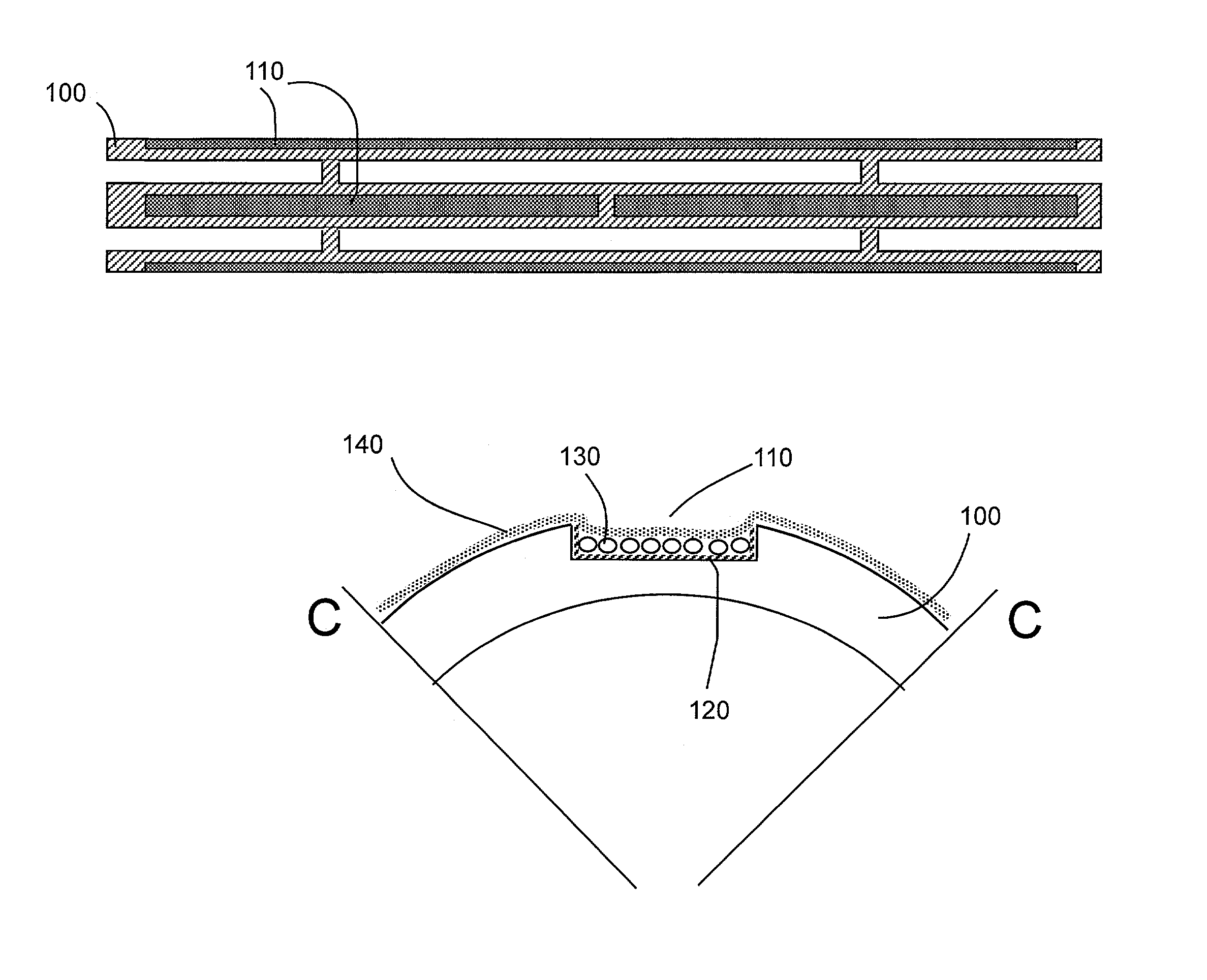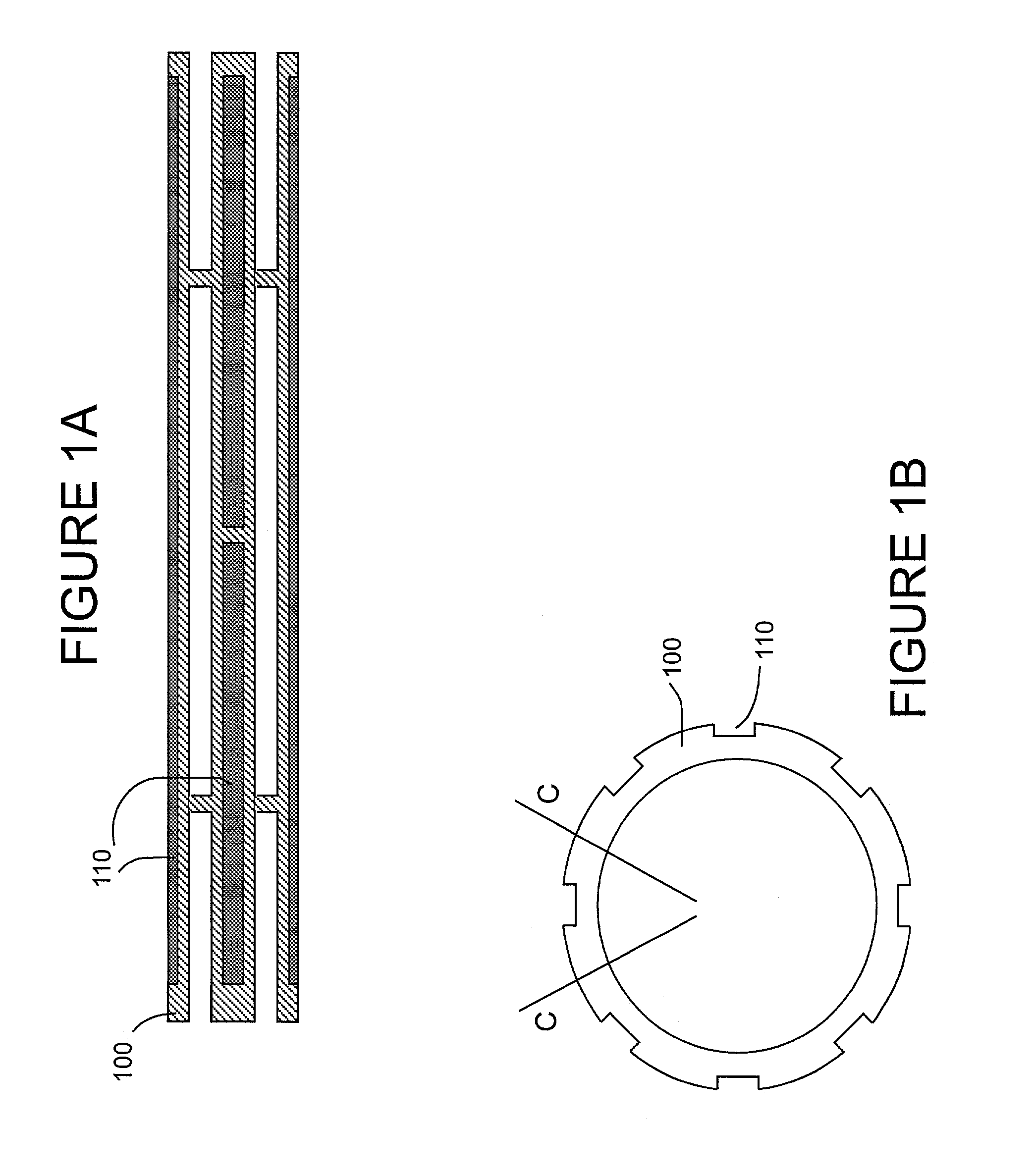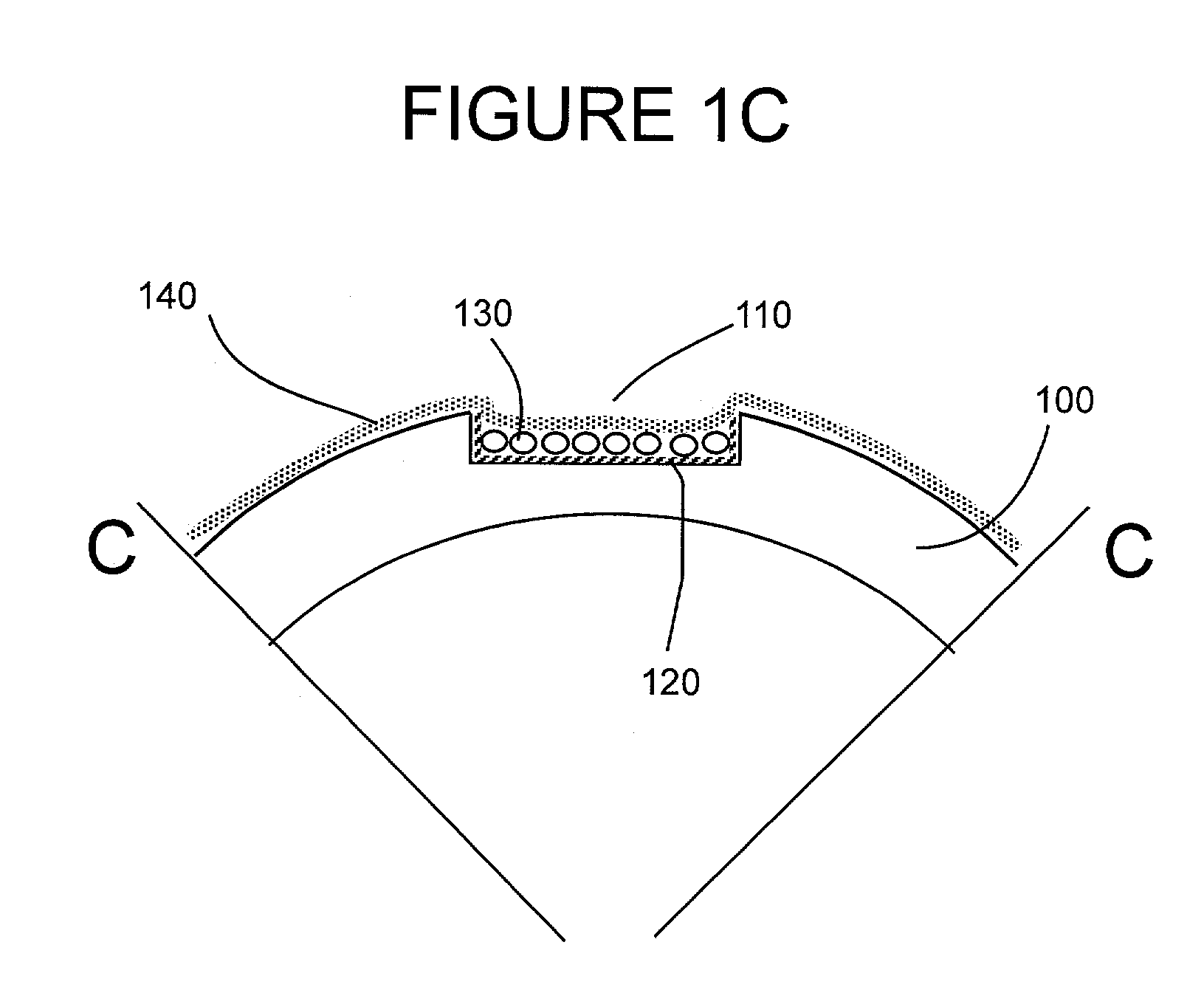Drug delivery platform
a technology of a delivery platform and a delivery plate, which is applied in the field of delivery plates, can solve the problems of dramatically accelerated in-stent restenosis rates of arteries treated with stents, limiting both utilization and long-term clinical benefits
- Summary
- Abstract
- Description
- Claims
- Application Information
AI Technical Summary
Benefits of technology
Problems solved by technology
Method used
Image
Examples
example 1
Stent-based Local Delivery Platform
[0089]Stent Design and Loading.
[0090]The stent design for this initial example is based on the Palmaz-Schatz coronary stent. The stainless steel stent is 1.6 mm in diameter and 10 mm in length and has 10 longitudinal struts evenly spaced circumferentially, and it is designed to be balloon expandable up to 5 mm diameter. Its basic slotted tube design was modified by electro-discharge machining (EDM) channels 80 microns wide by 60 microns deep along the length of the abluminal (toward the wall) side of each strut. The stent is designed to provide abluminal (toward the wall) but not adluminal (toward the lumen) delivery. With these dimensions, the channels cover 8.5% of the lumen wall area when deployed to a nominal diameter of 3 mm. The channels were machined from end to end in order to allow drug delivery both to the wall and to the tissue surrounding the stent end which both represent critical sights for neointima formation. Microspheres, which can...
example 2
Stent-based Release of an Angiogenesis Inhibitor Limits In-stent Plaque Progression
[0116]Microsphere Preparation.
[0117]Biodegradable poly(lactic-co-glycolic-acid)-polyethylene glycol (PLGA / PEG) microspheres were prepared as a modification of previously described techniques. A mixture of 8:1:PLGA(75:25):PEG-8000 was employed with the double emulsion technique to generate a final microsphere diameter of 10 microns, and a degradation time of approximately 4 weeks. Additionally, a pH buffer of 7.4 was incorporated to limit local pH changes in order to stabilize incorporated drugs and render the microspheres more biocompatible. During the microsphere manufacturing process, 2.0 mg of the angiogenesis inhibitor angiostatin (Calbiochem, La Jolla, Calif.) in 200 ml phosphate buffered saline was added to the polymer solution. Control microspheres (blank microspheres) containing polymer and buffer without any drug were also prepared. Stents were prepared as above.
[0118]In Vivo Stent Implantati...
example 3
Stent-based Release of a Factor to Increase Nitric Oxide Levels can Limit In-stent Plaque Progression
[0128]Microsphere / stent Preparation.
[0129]Microspheres were prepared as above (example 2b) except loaded with 40 mg NOC-12 (Calbiochem, La Jolla, Calif.) in 200 μl phosphate buffered saline in place of angiostatin and stents were loaded as before.
[0130]Plaque Formation.
[0131]Plaque morphometry was assessed as in Example 2, with results summarized as Table 4.
[0132]
TABLE 4Plague formation after in vivo stent implantation and nitric oxide release.Intima to media ratioControl1.981 ± 0.080NO 1.338 ± 0.051*Ratio of intimal area to medial area 28 days after stent implantation for control stents or stents releasing a nitric oxide donor (NO), (mean ± SE),*denotes P = 0.0001 vs. controls.
[0133]Conclusions.
[0134]Stent based local release of a nitric oxide donor reduces plaque progression after stenting. While this example presents use of NOC-12 as a specific agent, any NO donor could be substit...
PUM
| Property | Measurement | Unit |
|---|---|---|
| depth | aaaaa | aaaaa |
| width | aaaaa | aaaaa |
| diameter | aaaaa | aaaaa |
Abstract
Description
Claims
Application Information
 Login to View More
Login to View More - R&D
- Intellectual Property
- Life Sciences
- Materials
- Tech Scout
- Unparalleled Data Quality
- Higher Quality Content
- 60% Fewer Hallucinations
Browse by: Latest US Patents, China's latest patents, Technical Efficacy Thesaurus, Application Domain, Technology Topic, Popular Technical Reports.
© 2025 PatSnap. All rights reserved.Legal|Privacy policy|Modern Slavery Act Transparency Statement|Sitemap|About US| Contact US: help@patsnap.com



